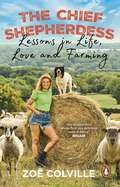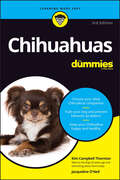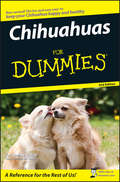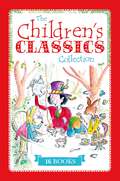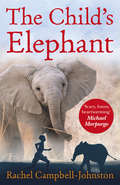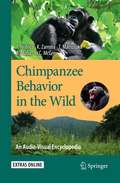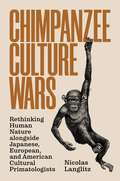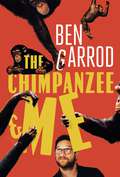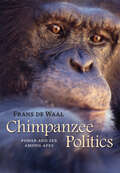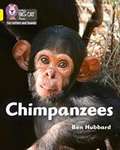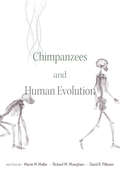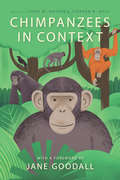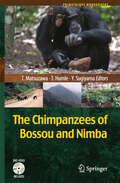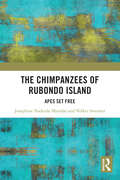- Table View
- List View
The Chief Shepherdess: Lessons in Life, Love and Farming
by Zoe Colville'A new breed of shepherdess blazing a trail across social media, challenging outdated ideas about the job and capturing the public's imagination along the way' - Daily Mail'The shepherdess whose flock you definitely need to follow' - Hello!"I grab the motionless lamb, which is frighteningly slippery, and scramble on my feet, swinging its little body around to help it breathe. I see its chest move, then it sneezes and starts breathing. It's stunned by the delivery experience. As am I. I'm high on adrenaline. Tears are streaming down my face. I pop the lamb down on the ground and start frantically rubbing its tiny body... Looking back, I can see that this was one of the first moments of questioning whether I'm truly cut out for farming, realising that the answer might be... yes"--------------------------------------------------------------Zoë Colville spent years in a fancy hair salon with a long list of clients, living on cigarettes, croissants, and a shoestring. It was everything she'd ever wanted. But when an unexpected and overwhelming loss caused her life to shift unexpectedly, she found herself on a different path. One where the only use for a hairdryer is warming new-born lambs; where the cycle of life on a farm gives new meaning on purpose, and where nature is both a strict teacher and a balm to soothe the pressures of everyday life.Alongside her long-term boyfriend, Zoë is now a full-time farmer, business owner and activist. In this memoir, she speaks vivaciously, humorously, and candidly about the lessons learned along the way, from mental health, social media and identity to surviving as an entrepreneur in a shifting economy. And through those lessons - in love, loss, and lambing - discovering something even more important: that it's always the right time to take a bold step and try something new.
Chihuahuas For Dummies
by Kim Campbell Thornton Jacqueline O'NeilKeep up to date with the latest info on raising, training, and living with your Chihuahua Chihuahuas For Dummies is your guide to discovering whether a Chihuahua is the right addition to your family and to caring for these little dogs once they’re under your roof. This fun book answers your most pressing questions about the breed’s needs and temperament, plus offers loads of friendly advice on everything a Chihuahua owner should know. You’ll also find fun facts and trivia, amusing and informative anecdotes, and tips on how to have a great time with your Chihuahua. This down-to-earth For Dummies reference is the only book you'll need to help you have the best possible experience with these very affectionate and adorable doggos. Understand the Chihuahua’s characteristics and body language Keep your dog healthy and happy with diet, exercise, and socialization Deal with bad behavior like biting, barking, and jumping Train your Chihuahua in the basics—sit, stay, heel, and come This is the book for anyone planning to adopt a Chihuahua and needing all the facts, plus current Chihuahua owners who need advice on training or are thinking of adding another member to their current fur family.
Chihuahuas For Dummies
by Kim Campbell Thornton Jacqueline O'NeilKeep up to date with the latest info on raising, training, and living with your Chihuahua Chihuahuas For Dummies is your guide to discovering whether a Chihuahua is the right addition to your family and to caring for these little dogs once they’re under your roof. This fun book answers your most pressing questions about the breed’s needs and temperament, plus offers loads of friendly advice on everything a Chihuahua owner should know. You’ll also find fun facts and trivia, amusing and informative anecdotes, and tips on how to have a great time with your Chihuahua. This down-to-earth For Dummies reference is the only book you'll need to help you have the best possible experience with these very affectionate and adorable doggos. Understand the Chihuahua’s characteristics and body language Keep your dog healthy and happy with diet, exercise, and socialization Deal with bad behavior like biting, barking, and jumping Train your Chihuahua in the basics—sit, stay, heel, and come This is the book for anyone planning to adopt a Chihuahua and needing all the facts, plus current Chihuahua owners who need advice on training or are thinking of adding another member to their current fur family.
Chihuahuas For Dummies
by Jacqueline O'NeilAre you crazy about Chihuahuas? Chihuahuas For Dummies, 2nd Edition, is fully updated to show you how to find the one you’ll love most and make him or her part of your family. This one-stop guide gives you all the information you need to raise and care for your plucky little pooch. You’ll find expert advice on everything from feeding and healthcare to housebreaking, grooming, training, and more. Plus, you’ll learn the ins and outs of selecting the right vet, handling emergencies, and even entering your little darling in a dog show. You’ll find out about the ups and downs of living with a pet, get familiar with the Chihuahua’s classic physical characteristics, and find help in deciding whether you’d prefer a dog with a long coat or a smooth coat. Discover how to: Choose your ideal Chihuahua Prepare your home for your new arrival Manage your puppy’s nutrition and health Prevent common behavior problems Teach your Chihuahua fun tricks Build a strong and loving bond with your pet Train children to get along with your Chihuahua Choose Chihuahua toys and accessories Select a crate and bedding Introduce your little dog to other pets Teach your little dynamo manners and good behavior You know that bringing a Chihuahua into your home will be a happy and joyful experience. Chihuahuas For Dummies, 2nd Edition, makes it easy, too!
Chihuahuas For Dummies
by Jacqueline O'NeilAre you crazy about Chihuahuas? Chihuahuas For Dummies, 2nd Edition, is fully updated to show you how to find the one you’ll love most and make him or her part of your family. This one-stop guide gives you all the information you need to raise and care for your plucky little pooch. You’ll find expert advice on everything from feeding and healthcare to housebreaking, grooming, training, and more. Plus, you’ll learn the ins and outs of selecting the right vet, handling emergencies, and even entering your little darling in a dog show. You’ll find out about the ups and downs of living with a pet, get familiar with the Chihuahua’s classic physical characteristics, and find help in deciding whether you’d prefer a dog with a long coat or a smooth coat. Discover how to: Choose your ideal Chihuahua Prepare your home for your new arrival Manage your puppy’s nutrition and health Prevent common behavior problems Teach your Chihuahua fun tricks Build a strong and loving bond with your pet Train children to get along with your Chihuahua Choose Chihuahua toys and accessories Select a crate and bedding Introduce your little dog to other pets Teach your little dynamo manners and good behavior You know that bringing a Chihuahua into your home will be a happy and joyful experience. Chihuahuas For Dummies, 2nd Edition, makes it easy, too!
Childhood Cancer: Impact on the Family (The Downstate series of research in psychiatry and psychology #5)
by Adolf E. Christ Kalman FlomenhaftThe past decade has brought extraordinary gains in the outlook for children stricken with cancer. Though cancer remains a leading cause of death for children and young adults, more victims of child hood cancer today will survive than will die. The therapeutic advances and the optimism they instill have prompted researchers and clinicians to analyze the impact of cancer upon young patients and their famil,ies and to devise more effective intervention strategies. Hope and survival, juxtaposed with the continuing high mortality associated with certain forms of the illness, add new challenges to management of the psychosocial aspects of cancer. To respond to these challenges we need research as rigorous as that which continues to make inroads in treating the physical illness. This specific concern for the needs of children suffering from cancer and their families has paralleled an increasing sensitivity on the part of the medical community and the public at large to the limitations of specialized, high technology health care practices.
Children of Fortune: A powerful new family saga from the Sunday Times bestselling author
by Val WoodThe stunning follow-up to The Lonely Wife from bestselling author Val Wood.'With fully developed characters and a compelling story, it's no wonder the author won the Catherine Cookson Prize for Fiction for her debut... A great choice for a book club' Belfast Telegraph1864: Following the untimely death of her cold-hearted husband, Beatrix and her three children are finally free. While Ambrose has already determined his path in life, eldest son Laurie's future is less certain. With the responsibility of the family estate on his shoulders, Laurie must decide between staying in Yorkshire to farm the family land and following his dreams.Meanwhile, headstrong and independent Alicia is defying expectation and excelling at school. There she befriends the enigmatic Olivia Snowdon and they quickly become inseparable. But Olivia's past is shrouded in mystery and as the two families grow closer, secrets start to come tumbling out...A powerful story of family ties, long-held secrets and the fleeting days of childhood.Praise for Val Wood:'A heart-warming story filled with compelling action' Rosie Goodwin'Hull's answer to Catherine Cookson' BBC Radio 4's Front Row'Wonderfully fully-fleshed characters are the mainstay of [Val Wood's] stories' Peterborough Telegraph
The Children's Classics Collection: 16 of the Best Children's Stories Ever Written
by Various Authors Stewart Ross Saviour PirottaAbridged and retold in modern English by respected children's authors, this collection of sixteen classic stories makes them accessible to readers as young as six, while retaining all the charm, atmosphere, and sense of adventure that made the original tales world-famous. These dramatic, easy-to-follow stories, charmingly illustrated with verve and humour by specially commissioned artists, deserve to find a home on every child's bookshelf.Included in this boxed set:1. Alice in Wonderland2. Treasure Island3. The Wizard of Oz4. The Jungle Book5. The Secret Garden6. Robin Hood7. Peter Pan8. Heidi9. Anne of Green Gables10. Little Women11. Black Beauty12. The Call of the Wild13. Robinson Crusoe14. Wind in the Willows15. Tom Sawyer16. Oliver Twist
The Child's Elephant
by Rachel Campbell-Johnston'I cannot trumpet this book loudly enough. Scary, funny, romantic, heartwarming; an elephant book you won’t forget' - Michael MorpurgoWhen a baby elephant is abandoned on the African savannah, a young boy named Bat takes her back to his village and cares for her. But Bat's grandmother explains that Meya cannot stay with them for ever - the call of the wild will always be sounding in her soul. Then frightening rumours arrive at the village; rumours of kidnapping, suffering and war. Bat and his friend Muka are snatched, and catapulted into a new life of unimaginable terror. Will the bond between Bat and Meya strong enough to save them?A thrilling, heartbreaking and beautiful novel from an exciting new voice in children's books, Rachel Campbell-Johnston.
CHIMBRIDS - Chimeras and Hybrids in Comparative European and International Research: Scientific, Ethical, Philosophical and Legal Aspects (Veröffentlichungen des Instituts für Deutsches, Europäisches und Internationales Medizinrecht, Gesundheitsrecht und Bioethik der Universitäten Heidelberg und Mannheim #34)
by Jochen Taupitz Marion WeschkaNational, European and international concepts and strategies concerning the legal and ethical framework of chimera and hybrid research are still largely missing, even though they are absolutely necessary in order to use the potential of chimera and hybrid research effectively and efficiently for the benefit of science and society. The outcome of the CHIMBRIDS-Project successfully sheds light on the chances and risks of this research and provides legal solutions to existing problems in order to help decision-makers fulfil their tasks in an informed and efficient manner. This comprehensive volume details the complete results, contributed by 40 scholars from 10 member states of the European Union, Canada, China, Israel, Japan, Switzerland and the US, with descriptive reports of the legal situation in specific countries and in-depth analysis of all scientific, medical, ethical and legal implications of chimera and hybrid research.
Chimpanzee Behavior in the Wild: An Audio-Visual Encyclopedia
by Toshisada Nishida Koichiro Zamma Agumi Inaba Takahisa Matsusaka William C. McGrewWhere We Stand Field workers—scientists of animal (including human!) behavior in nature—have long been fascinated by wild chimpanzees. A person who once has studied wild chimpanzees will be eager to observe them again. A person who has studied them twice will make every effort to continue the study, unless prevented from doing so. In short, behavioral primatology is addictive! Many people, among them Jane Goodall, Richard Wrangham, and I, do not regret that they have dedicated their whole lives to the study of wild chimpanzees. This is because the apes’ behavior is always challenging: chimpanzees are cheerful, charming, playful, curious, beautiful, easygoing, generous, tolerant, and trustw- thy most of the time, but also are cautious, cunning, ugly, violent, ferocious, blo- thirsty, greedy, and disloyal at other times. We human beings share both the light and dark sides with our closest living relatives. For decades, we have documented huge across-population variation in behavior, as well as within-population variation. Cultural biology (now called cultural pri- tology), as proposed 60 years ago by Kinji Imanishi, recently has flourished.
Chimpanzee Culture Wars: Rethinking Human Nature alongside Japanese, European, and American Cultural Primatologists
by Nicolas LanglitzThe first ethnographic exploration of the contentious debate over whether nonhuman primates are capable of cultureIn the 1950s, Japanese zoologists took note when a number of macaques invented and passed on new food-washing behaviors within their troop. The discovery opened the door to a startling question: Could animals other than humans share social knowledge—and thus possess culture? The subsequent debate has rocked the scientific world, pitting cultural anthropologists against evolutionary anthropologists, field biologists against experimental psychologists, and scholars from Asia against their colleagues in Europe and North America. In Chimpanzee Culture Wars, the first ethnographic account of the battle, anthropologist Nicolas Langlitz presents first-hand observations gleaned from months spent among primatologists on different sides of the controversy.Langlitz travels across continents, from field stations in the Ivory Coast and Guinea to laboratories in Germany and Japan. As he compares the methods and arguments of the different researchers he meets, he also considers the plight of cultural primatologists as they seek to document chimpanzee cultural diversity during the Anthropocene, an era in which human culture is remaking the planet. How should we understand the chimpanzee culture wars in light of human-caused mass extinctions?Capturing the historical, anthropological, and philosophical nuances of the debate, Chimpanzee Culture Wars takes us on an exhilarating journey into high-tech laboratories and breathtaking wilderness, all in pursuit of an answer to the question of the human-animal divide.
Chimpanzee Culture Wars: Rethinking Human Nature alongside Japanese, European, and American Cultural Primatologists
by Nicolas LanglitzThe first ethnographic exploration of the contentious debate over whether nonhuman primates are capable of cultureIn the 1950s, Japanese zoologists took note when a number of macaques invented and passed on new food-washing behaviors within their troop. The discovery opened the door to a startling question: Could animals other than humans share social knowledge—and thus possess culture? The subsequent debate has rocked the scientific world, pitting cultural anthropologists against evolutionary anthropologists, field biologists against experimental psychologists, and scholars from Asia against their colleagues in Europe and North America. In Chimpanzee Culture Wars, the first ethnographic account of the battle, anthropologist Nicolas Langlitz presents first-hand observations gleaned from months spent among primatologists on different sides of the controversy.Langlitz travels across continents, from field stations in the Ivory Coast and Guinea to laboratories in Germany and Japan. As he compares the methods and arguments of the different researchers he meets, he also considers the plight of cultural primatologists as they seek to document chimpanzee cultural diversity during the Anthropocene, an era in which human culture is remaking the planet. How should we understand the chimpanzee culture wars in light of human-caused mass extinctions?Capturing the historical, anthropological, and philosophical nuances of the debate, Chimpanzee Culture Wars takes us on an exhilarating journey into high-tech laboratories and breathtaking wilderness, all in pursuit of an answer to the question of the human-animal divide.
Chimpanzee (Large Print)
This is an image of a chimpanzee shown from the side with its head in the top left corner of the page and body in the centre. There is a locator dot shown, which will be at the top left of the page when the image is the right way up.The chimpanzee is facing you so both ears, eyes, small nostrils and mouth can be found. It has a pale hairless face. On the right of the page is the chimpanzee's hairy body. The chimpanzee walks on its forearms and legs. Its forearms to the left of the image rest on the knuckles of its curled hands and to the right are its legs with large feet and toes at the bottom of the page.
The Chimpanzee & Me
by Ben GarrodBen Garrod: As seen on TV – Baby Chimps Rescue. 'Celebrities blamed for the rise in people keeping primates as pets in Britain' TIMES 2.'4,500 primates owned as pets in the UK' SKY NEWS.'As ownership of exotic pets booms, no wonder experts are asking... conservation or cruelty?' DAILY MAIL. The Chimpanzee & Me is a unique look at conservation of the species and Ben's life-long love of chimps, illustrated with full colour photos. For over a decade, Ben Garrod has studied chimpanzees to find ways to protect and conserve them. We join Ben on a journey that has taken him around the world, studying eastern chimps in the humid forests of Uganda and the critically endangered western chimps of Liberia. In his trademark infectious, lighthearted style, Ben describes encounters with chimpanzees that highlight the different threats they face. From the illegal international pet trade, to bushmeat markets, and the effects of relentless habitat destruction – not to mention how your new furniture, your toothpaste and even your mobile phone are all implicated in their falling numbers. In an interview with world-renowned primatologist Dr Jane Goodall, Ben shows how we can protect the chimps of the future and help conserve this endlessly fascinating species.
Chimpanzee Politics: Power and Sex among Apes
by Frans WaalThe first edition of Frans de Waal's Chimpanzee Politics was acclaimed not only by primatologists for its scientific achievement but also by politicians, business leaders, and social psychologists for its remarkable insights into the most basic human needs and behaviors. Still considered a classic, this updated edition is a detailed and thoroughly engrossing account of rivalries and coalitions—actions governed by intelligence rather than instinct. As we watch the chimpanzees of Arnhem behave in ways we recognize from Machiavelli (and from the nightly news), de Waal reminds us again that the roots of politics are older than humanity.
Chimpanzee (UEB Contracted)
This is an image of a chimpanzee shown from the side with its head in the top left corner of the page and body in the centre. There is a locator dot shown, which will be at the top left of the page when the image is the right way up.The chimpanzee is facing you so both ears, eyes, small nostrils and mouth can be found. It has a pale hairless face. On the right of the page is the chimpanzee's hairy body. The chimpanzee walks on its forearms and legs. Its forearms to the left of the image rest on the knuckles of its curled hands and to the right are its legs with large feet and toes at the bottom of the page.
Chimpanzee (UEB Uncontracted)
This is an image of a chimpanzee shown from the side with its head in the top left corner of the page and body in the centre. There is a locator dot shown, which will be at the top left of the page when the image is the right way up.The chimpanzee is facing you so both ears, eyes, small nostrils and mouth can be found. It has a pale hairless face. On the right of the page is the chimpanzee's hairy body. The chimpanzee walks on its forearms and legs. Its forearms to the left of the image rest on the knuckles of its curled hands and to the right are its legs with large feet and toes at the bottom of the page.
Chimpanzees: Band 3 Yellow (PDF) (Collins Big Cat Phonics For Letters And Sounds Ser.)
by Ben HubbardCollins Big Cat Phonics for Letters and Sounds features exciting fiction and non-fiction decodable readers to enthuse and inspire children. They are fully aligned to Letters and Sounds Phases 1-6 and contain notes in the back. The Handbooks provide support in demonstration and modelling, monitoring comprehension and expanding vocabulary. Learn all about chimpanzees, from where they live to what they eat, in this photographic non-fiction book. Yellow/Band 3 books offer varied sentence structure and natural language This book focuses on adjacent consonants with short vowel phonemes. Pages 14 and 15 allow children to re-visit the content of the book, supporting comprehension skills, vocabulary development and recall. Reading notes within the book provide practical support for reading Big Cat Phonics for Letters and Sounds with children, including a list of all the sounds and words that the book will cover.
Chimpanzees and Human Evolution
by Martin N. MullerKnowledge of wild chimpanzees has expanded dramatically. This volume, edited by Martin Muller, Richard Wrangham, and David Pilbeam, brings together scientists who are leading a revolution to discover and explain human uniqueness, by studying our closest living relatives. Their conclusions may transform our understanding of human evolution.
Chimpanzees and Human Evolution
by Martin N. MullerKnowledge of wild chimpanzees has expanded dramatically. This volume, edited by Martin Muller, Richard Wrangham, and David Pilbeam, brings together scientists who are leading a revolution to discover and explain human uniqueness, by studying our closest living relatives. Their conclusions may transform our understanding of human evolution.
Chimpanzees in Context: A Comparative Perspective on Chimpanzee Behavior, Cognition, Conservation, and Welfare
by Lydia M. Hopper Stephen R. RossThe study of the chimpanzee, one of the human species’ closest relatives, has led scientists to exciting discoveries about evolution, behavior, and cognition over the past half century. In this book, rising and veteran scholars take a fascinating comparative approach to the culture, behavior, and cognition of both wild and captive chimpanzees. By seeking new perspectives in how the chimpanzee compares to other species, the scientists featured offer a richer understanding of the ways in which chimpanzees’ unique experiences shape their behavior. They also demonstrate how different methodologies provide different insights, how various cultural experiences influence our perspectives of chimpanzees, and how different ecologies in which chimpanzees live affect how they express themselves. After a foreword by Jane Goodall, the book features sections that examine chimpanzee life histories and developmental milestones, behavior, methods of study, animal communication, cooperation, communication, and tool use. The book ends with chapters that consider how we can apply contemporary knowledge of chimpanzees to enhance their care and conservation. Collectively, these chapters remind us of the importance of considering the social, ecological, and cognitive context of chimpanzee behavior, and how these contexts shape our comprehension of chimpanzees. Only by leveraging these powerful perspectives do we stand a chance at improving how we understand, care for, and protect this species.
Chimpanzees in Context: A Comparative Perspective on Chimpanzee Behavior, Cognition, Conservation, and Welfare
The study of the chimpanzee, one of the human species’ closest relatives, has led scientists to exciting discoveries about evolution, behavior, and cognition over the past half century. In this book, rising and veteran scholars take a fascinating comparative approach to the culture, behavior, and cognition of both wild and captive chimpanzees. By seeking new perspectives in how the chimpanzee compares to other species, the scientists featured offer a richer understanding of the ways in which chimpanzees’ unique experiences shape their behavior. They also demonstrate how different methodologies provide different insights, how various cultural experiences influence our perspectives of chimpanzees, and how different ecologies in which chimpanzees live affect how they express themselves. After a foreword by Jane Goodall, the book features sections that examine chimpanzee life histories and developmental milestones, behavior, methods of study, animal communication, cooperation, communication, and tool use. The book ends with chapters that consider how we can apply contemporary knowledge of chimpanzees to enhance their care and conservation. Collectively, these chapters remind us of the importance of considering the social, ecological, and cognitive context of chimpanzee behavior, and how these contexts shape our comprehension of chimpanzees. Only by leveraging these powerful perspectives do we stand a chance at improving how we understand, care for, and protect this species.
The Chimpanzees of Bossou and Nimba
by Tetsuro Matsuzawa, Tatyana Humle and Yukimaru SugiyamaThe chimpanzees of Bossou in Guinea, West Africa, form a unique community which displays an exceptional array of tool use behaviors and behavioral adaptations to coexistence with humans. This community of Pan troglodytes verus has contributed more than three decades of data to the field of cultural primatology, especially chimpanzees’ flexible use of stones to crack open nuts and of perishable tools during foraging activities. The book highlights the special contribution of the long-term research at Bossou and more recent studies in surrounding areas, particularly in the Nimba Mountains and the forest of Diécké, to our understanding of wild chimpanzees’ tool use, cognitive development, lithic technology and culture. This compilation of research principally strives to uncover the complexity of the mind and behavioral flexibility of our closest living relatives. This work also reveals the necessity for ongoing efforts to conserve chimpanzees in the region. Chimpanzees have shed more light on our evolutionary origins than any other extant species in the world, yet their numbers in the wild are rapidly declining. In that sense, the Bossou chimpanzees and their neighbors clearly embody an invaluable cultural heritage for humanity as a whole.Readers can enjoy video clips illustrating unique behaviors of Bossou chimpanzees, in an exclusive DVD accompanying the hardcover or at a dedicated website described in the softcover.
The Chimpanzees of Rubondo Island: Apes Set Free
by Josephine Nadezda Msindai Volker SommerHow did a random batch of chimpanzees come to populate a small island in Tanzania where apes had never lived before? Combining information gathered from fieldwork, laboratory and archival research, this book tells the unique story of chimpanzee babies taken from their forest homes in West-Central Africa and sold to European zoos and circuses, to then be shipped to Lake Victoria and set free on Rubondo Island. These founder animals learnt what to eat, how to build nests, to breed and raise young – ultimately forming a chimpanzee-typical fission–fusion society that today is thriving. The authors compare the ecology, behaviour and genetics of the Rubondo population with communities of wild chimpanzees, providing exciting insights into how our closest relatives adjust to changing environments. At the same time, a reconstruction of the historical context of the Rubondo experiment reflects on its chequered colonial heritage, and the introduction is viewed against current threats to the survival of apes in their natural habitats. The book will be of interest to scholars and professionals working in primatology, animal behaviour, conservation biology and postcolonial studies.
